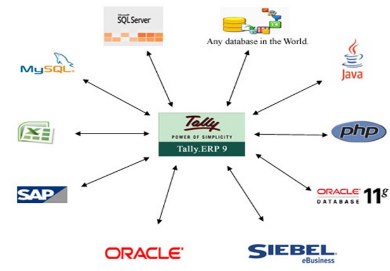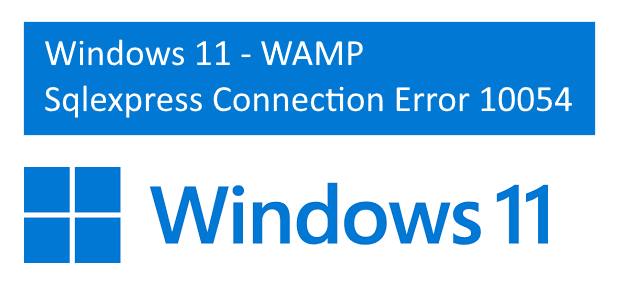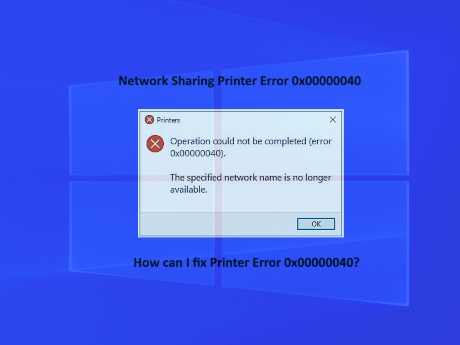IT Technical Support for Developers
Tally Integration Capabilities
Share

Tally - XML Request / Response
contains the following:
Tag must contain value Export
Tag must contain value Data
Tag should contain the Name of the TDL Report
contains the following:
In the above XML Request, Create action is used. Any of the following system formulae can be used to choose the required behavior in case the system encounters a ledger with the same name. The behavior is for the treatment of the Opening Balance which is being imported.
<RESPONSE>
The above XML Response is a log of masters created, altered, combined, ignored or not imported due to some errors. It also contains information pertaining to the last Master ID imported. For Alteration and Deletion of Masters, the Object action needs to be Alter or Delete respectively.
For instance, in the above example,
<LEDGER NAME="ICICI" Action = "Alter">
Name of an existing ledger ICICI will get altered to HDFC.
In case of Deletion, following line suffices
<LEDGER NAME="ICICI" Action = "Delete">
<ENVELOPE>
In the above XML request, <HEADER> describes the expected result.
Tally Integration Using XML Read / Write

Tally Interfaces – For Integration
Tally communicates with the external world mainly using two Interfaces.
1.Tally ODBC Interface (Read Only)
2.Tally XML Interface (Read and Write)
1.Tally ODBC Interface (Read Only)
2.Tally XML Interface (Read and Write)
Tally XML Interface Integration
XML (Extensible Markup Language) is the standard for information exchange with external
systems. Tally.ERP 9 supports standardized message formats for Request/Response. Tally.ERP
9 can communicate with any environment capable of sending and receiving XML over HTTP.
Tally can act as an HTTP Server capable of receiving an XML Request and responding with an
XML Response. The entire Tally Data can be made available to the requesting application. It is
also possible for the application to store data into Tally Database.
Using the same interface, Tally has the capability to interact with a Web Service delivering Data
over HTTP. In this scenario, Tally behaves as a client retrieving and storing data into an external
database. The Web Service capable of handling Tally Request/Response serves as a layer
between Tally and External Database.
Example : Tally - XML IntegrationTally - XML Request / Response
Let us consider different scenarios to understand the Request and Response XML structure.
Export - Request to Export Data and Corresponding response.
Import - Request to Import Data and the Corresponding response.
Execute - Request to Execute Action and Corresponding response.
Tally Export Data Using XML
Tags used for sending a request to export data from Tally.ERP 9.Tag
Tag
Tag
contains the following:
Tag can contain report settings like Company Name, Format, etc. as desired which should be enclosed within tag.
If the Report Name specified in the tag does not exist within Tally running at the specified port, the TDL defining the Report & other supporting definition needs to be described and enclosed within tag .
Example : Request for a detailed Trial Balance in XML Format from Tally.
<ENVELOPE>
<HEADER>
<VERSION>1</VERSION>
<TALLYREQUEST>Export</TALLYREQUEST>
<TYPE>Data</TYPE>
<ID>Trial Balance</ID>
</HEADER>
<BODY>
<DESC>
<STATICVARIABLES>
<EXPLODEFLAG>Yes</EXPLODEFLAG>
<SVEXPORTFORMAT>$$SysName:XML</SVEXPORTFORMAT>
</STATICVARIABLES>
</DESC>
</BODY>
</ENVELOPE>
In the above XML request, <HEADER> describes the expected result.
- The value of the Tag <TALLYREQUEST> is Export which indicates that some information needs to be exported from Tally.
- The value of the Tag <TYPE> is Data which indicates that the data needs to be exported from Tally.
- The value of the Tag <ID> must be a TDL Report Name, if the previous Tag <TYPE> contains Data and Tag <TALLYREQUEST> contains Export. Any Report which needs to be exported from Tally can be specified within this Tag.
- <BODY> Tag contains parameters, if any. Additional settings for the report like format required, company from which data is required, etc. can be passed within <STATICVARIABLES> Tag enclosed within <DESC> Tag. All variables are considered as Tag Names and their value are enclosed within these tags. For e.g., in the above XML, variables SVEXPORTFORMAT and EXPLODEFLAG are considered as Tags and their respective values $$SysName:XML and Yes are enclosed within. TDL Internal Function SysName is evaluated at Tally end and the response is being sent accordingly.
XML Response received From Tally
<ENVELOPE>
<DSPACCNAME>
<DSPDISPNAME>Capital Account</DSPDISPNAME>
</DSPACCNAME>
<DSPACCINFO>
<DSPCLDRAMT>
<DSPCLDRAMTA></DSPCLDRAMTA>
</DSPCLDRAMT>
<DSPCLCRAMT>
<DSPCLCRAMTA>100000.00</DSPCLCRAMTA>
</DSPCLCRAMT>
</DSPACCINFO>
<DSPACCINFO>
<DSPCLDRAMT>
<DSPCLDRAMTA>-100000.00</DSPCLDRAMTA>
</DSPCLDRAMT>
<DSPCLCRAMT>
<DSPCLCRAMTA></DSPCLCRAMTA>
</DSPCLCRAMT>
</DSPACCINFO>
.
.
.
</DSPACCNAME>
</ENVELOPE>
Tally Import Using XML
Tally can import data objects either in the form of a Master or Voucher.
<HEADER> contains the following
- Tag <TALLYREQUEST> must contain value Import
- Tag <TYPE> must contain value Data and
- Tag <ID> should contain the Import TDL Report i.e., either All Masters or Vouchers.
<BODY> contains the following
- Tag <DESC> can contain report settings like Company Name, behavior of Import in case of duplicates found; as desired which should be enclosed within <STATICVARIABLES> Tag.
- Tag <DATA> must contain the XML Data Fragment within Tag <TALLYMESSAGE> that needs to be imported
Example : Request for importing Master data in Tally
<ENVELOPE>
<HEADER>
<VERSION>1</VERSION>
<TALLYREQUEST>Import</TALLYREQUEST>
<TYPE>Data</TYPE>
<ID>All Masters</ID
</HEADER>
<BODY>
<DESC>
<STATICVARIABLES>
<IMPORTDUPS>@@DUPCOMBINE</IMPORTDUPS>
</STATICVARIABLES>
</DESC>
<DATA>
<TALLYMESSAGE>
<LEDGER NAME="ICICI" Action = "Create">
<NAME>ICICI</NAME>
<PARENT>Bank Accounts</PARENT>
<OPENINGBALANCE>-12500</OPENINGBALANCE>
</LEDGER>
<GROUP NAME=" Bangalore Debtors" Action = "Create">
<NAME>Bangalore Debtors</NAME>
<PARENT>Sundry Debtors</PARENT>
</GROUP>
<LEDGER NAME="RK Builders Pvt Ltd" Action = "Create">
<NAME>RK Builders Pvt Ltd</NAME>
<PARENT>Bangalore Debtors</PARENT>
<OPENINGBALANCE>-1000</OPENINGBALANCE>
</LEDGER>
</TALLYMESSAGE>
</DATA>
</BODY>
</ENVELOPE>
In the above XML Request, Create action is used. Any of the following system formulae can be used to choose the required behavior in case the system encounters a ledger with the same name. The behavior is for the treatment of the Opening Balance which is being imported.
- DupModify specifies that the current Opening Balance should be modified with the new one that is being imported.
- DupIgnoreCombine specifies that the ledger if exists need to be ignored.
- DupCombine specifies the system to combine both the Opening Balances. Ideally, this option is used when Data pertaining to Group Companies are merged together into a single company.
On processing the above request for importing ledgers, the requested ledgers are created in Tally.
XML Response received From Tally.
XML Response received From Tally.
<RESPONSE>
<CREATED>2</CREATED>
<ALTERED>0</ALTERED>
<LASTVCHID>0</LASTVCHID>
<LASTMID>0</LASTMID>
<COMBINED>0</COMBINED>
<IGNORED>0</IGNORED>
<ERRORS>0</ERRORS>
</RESPONSE>
The above XML Response is a log of masters created, altered, combined, ignored or not imported due to some errors. It also contains information pertaining to the last Master ID imported. For Alteration and Deletion of Masters, the Object action needs to be Alter or Delete respectively.
For instance, in the above example,
<LEDGER NAME="ICICI" Action = "Alter">
<NAME>HDFC</NAME>
Name of an existing ledger ICICI will get altered to HDFC.
In case of Deletion, following line suffices
<LEDGER NAME="ICICI" Action = "Delete">
Execute
Tags used for sending a request to Execute an action from Tally.ERP 9.
<HEADER> contains the following:
- Tag <TALLYREQUEST> must contain value Execute
- Tag <TYPE> must contain value TDLAction and
- Tag <ID> should contain the Name of the TDL Action
Example : Request for Executing Synchronization in Tally
<ENVELOPE>
<HEADER>
<VERSION>1</VERSION>
<TALLYREQUEST>Execute</TALLYREQUEST>
<TYPE>TDLAction</TYPE>
<ID>Sync</ID>
</HEADER>
</ENVELOPE>
In the above XML request, <HEADER> describes the expected result.
- The value of the Tag <TALLYREQUEST> is Execute which indicates that some action needs to be executed in Tally.
- The value of the Tag <TYPE> is TDLAction which indicates that some TDLAction has to be executed in Tally.
- The value of the Tag <ID> must be a TDL Action Name. Any action which needs to be executed in Tally can be specified within this Tag.
Latest Post
/Windows
/Windows
/Windows
/Windows
/Windows
 ( 5 ) by 1 User(s).
( 5 ) by 1 User(s).



